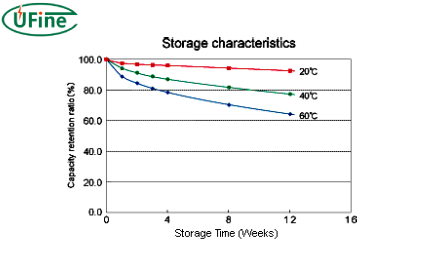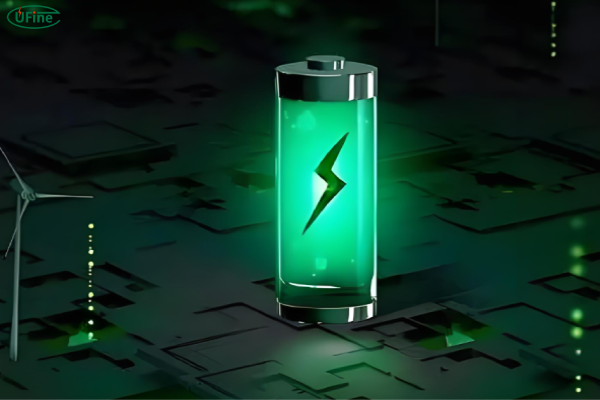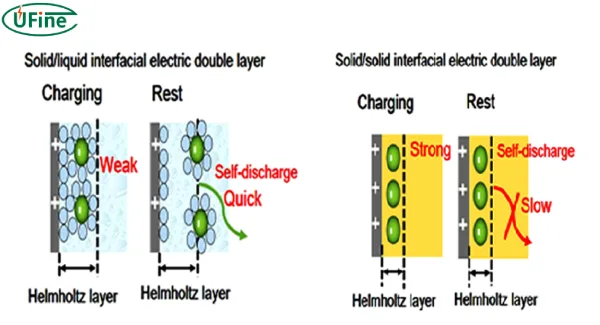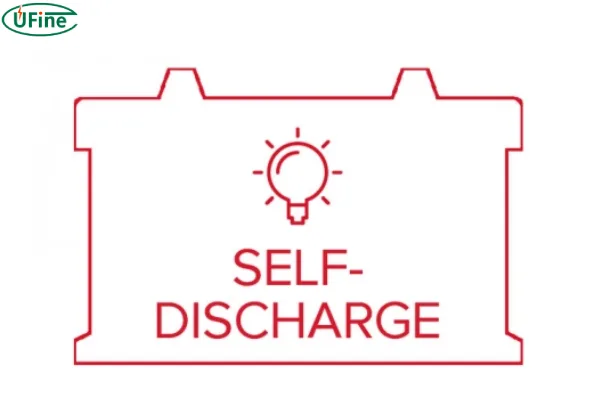
- Part 1. Why does a lithium battery die when it is not used?
- Part 2. How li-ion battery die with no charging?
- Part 3. How often should a lithium battery be charged when it is not used?
- Part 4. Lithium battery too low to charge
- Part 5. Can a completely dead lithium battery be recharged?
- Part 6. How to jumpstart a dead li-ion battery?
- Part 7. How to maintain an unused lithium battery?
- Part 8. Conclusion
Lithium-ion batteries are the powerhouses of our modern world, powering everything from our smartphones and laptops to electric vehicles. But these marvels of technology have a hidden weakness: they can die if left unused for too long. This phenomenon, known as “deep discharge,” can be a frustrating and costly experience, leaving you with a seemingly useless battery.
This article delves into the science behind lithium-ion battery death from non-use, offering a comprehensive guide to understanding, preventing, and potentially reviving these batteries. We’ll explore the intricate workings of these batteries, uncover the reasons behind their demise, and provide practical tips to keep your lithium-ion batteries healthy and ready for action.
Part 1. Why does a lithium battery die when it is not used?
The root of the problem lies in the very nature of lithium-ion batteries. Unlike traditional lead-acid batteries, which can withstand prolonged periods of inactivity, lithium-ion batteries have a natural tendency to self-discharge. This means they lose charge even when not in use, a process driven by internal chemical reactions.
The Chemical Dance of Self-Discharge:
Battery, where electrons are constantly moving between the anode (positive terminal) and cathode (negative terminal) through an electrolyte solution. This flow of electrons is what creates the electrical current we use to power our devices. However, in a lithium-ion battery, even when not connected to a device, there’s a constant, albeit slow, movement of lithium ions within the electrolyte. These ions are constantly migrating between the anode and cathode, causing a gradual depletion of the battery’s charge.
The Rate of Self-Discharge:
The rate of self-discharge varies depending on several factors, including the battery’s chemistry, age, temperature, and even the manufacturing process. Generally, lithium-ion batteries have a self-discharge rate of around 5% per month, meaning they lose about 5% of their charge every 30 days. While this might seem insignificant at first, it can accumulate over time, leading to a significant loss of capacity.
Part 2. How li-ion battery die with no charging?

When a lithium-ion battery’s charge falls below a certain threshold, it enters a state known as “deep discharge.” This is a critical point where the battery’s internal structure begins to suffer irreversible damage. Think of it as a delicate ecosystem where the balance is disrupted.
The Consequences of Deep Discharge:
-
Crystallization of Electrolyte: The electrolyte, which facilitates the movement of lithium ions, can crystallize when the battery is deeply discharged. These crystals can block the flow of ions, hindering the battery’s ability to charge and discharge efficiently.
-
Formation of Solid Electrolyte Interphase (SEI) Layer: The SEI layer is a protective film that forms on the anode during the initial charging cycle. However, deep discharge can cause the SEI layer to thicken and become less effective, leading to increased internal resistance and reduced battery capacity.
-
Damage to Electrode Materials: Deep discharge can cause the electrode materials, particularly the anode, to degrade and lose their ability to store and release lithium ions effectively. This leads to a decrease in battery capacity and performance.
The Point of No Return:
Once a lithium-ion battery has experienced deep discharge, it becomes increasingly difficult to revive. The damage to the battery’s internal components can be so severe that it may no longer hold a charge or even be able to accept a charge. This is why preventing deep discharge is crucial for maintaining the health and lifespan of your lithium-ion batteries.
Part 3. How often should a lithium battery be charged when it is not used?
The key to preventing deep discharge and extending the life of your lithium-ion batteries is regular charging. While the exact frequency depends on the battery’s specific characteristics, a general rule of thumb is to charge your battery every few months, even if you’re not using it.
The Importance of Regular Charging:
-
Maintaining Charge Levels: Regular charging ensures that the battery’s charge level stays above the critical threshold for deep discharge, preventing the damaging effects of prolonged low charge.
-
Minimizing Internal Resistance: Regular charging helps maintain the integrity of the SEI layer and prevents the crystallization of the electrolyte, minimizing internal resistance and ensuring efficient charge and discharge cycles.
-
Extending Battery Lifespan: By preventing deep discharge, regular charging significantly extends the battery’s lifespan, allowing you to enjoy its full potential for longer.
Finding the Right Balance:
While regular charging is essential, it’s also important to avoid overcharging. Overcharging can also damage the battery, so it’s crucial to follow the manufacturer’s recommendations for charging time and current. Modern lithium-ion batteries typically have built-in charging circuits that prevent overcharging, but it’s always best to err on the side of caution.
Part 4. Lithium battery too low to charge
If you’ve neglected your lithium-ion battery and it’s fallen into a state of deep discharge, there’s still a chance to revive it. However, the success rate depends on the severity of the damage and the battery’s age.
Revival Techniques:
-
Gentle Charging: Attempt to charge the battery using a low-current charger for a prolonged period. This method can sometimes help to slowly restore the battery’s charge and revive its internal components.
-
Special Chargers: Some specialized chargers are designed to handle deep-discharged batteries. These chargers use specific charging protocols to gently restore the battery’s charge and minimize further damage.
-
Battery Specialists: If the battery is severely damaged or you’re unsure how to proceed, it’s best to consult a battery specialist. They have the expertise and equipment to diagnose the problem and determine the best course of action.
The Importance of Patience:
Reviving a deeply discharged lithium-ion battery can be a slow and painstaking process. It may take several days or even weeks of gentle charging to restore the battery’s capacity. Be patient and persistent, and don’t give up hope too quickly.
Part 5. Can a completely dead lithium battery be recharged?
Sometimes, a completely dead lithium battery can be revived. But it’s not guaranteed. It’s like trying to jumpstart a car with a completely dead battery – it might work, but it’s not always successful. The best way to prevent this is to charge your battery regularly, even if you don’t use it.
Part 6. How to jumpstart a dead li-ion battery?

You can’t jumpstart a dead lithium-ion battery like you can a car battery. Lithium batteries require specific charging methods. If your battery is too low to charge, you’ll need to use a special charger or contact a battery specialist. They can provide the right tools and techniques to revive your battery.
Part 7. How to maintain an unused lithium battery?
The best way to avoid the heartache of a dead lithium-ion battery is to take proactive steps to prevent deep discharge. Here are some practical tips to keep your batteries healthy and ready for action:
-
Charge Regularly: Charge your battery every few months, even if you’re not using it. This is the most effective way to prevent deep discharge and maintain the battery’s health.
-
Store Properly: Store your battery in a cool, dry place, away from extreme temperatures and direct sunlight. High temperatures can accelerate self-discharge and damage the battery’s internal components.
-
Avoid Overcharging: Overcharging can also damage the battery, so always follow the manufacturer’s recommendations for charging time and current.
-
Use a Battery Management System (BMS): Some batteries have built-in BMS systems that monitor the battery’s charge and discharge cycles and prevent deep discharge. If your battery has a BMS, be sure to use it to its full potential.
Part 8. Conclusion
Lithium-ion batteries are essential components of our modern lives. By understanding the science behind battery self-discharge and deep discharge, and by implementing proactive maintenance strategies, you can prevent these batteries from dying prematurely and ensure they continue to power your devices for years to come. Remember, the key to a long and healthy battery life is regular charging, proper storage, and a little bit of preventive care.
Related Tags:
More Articles

Can You Really Buy Cheap Batteries Safely?
Learn the truth about cheap batteries, hidden risks, and how to find affordable yet safe lithium batteries from Ufine Battery experts.
Do Lithium Batteries Require Special Strap Downs? (Safety + Vibration Control)
Discover why lithium batteries require special strap downs to prevent vibration damage, terminal stress, and internal component issues.
Battery Strap Down Safety Tips: Preventing Vibration Damage and Terminal Stress
Follow these expert battery strap down safety tips to prevent vibration damage, terminal stress, and ensure LiFePO4 battery longevity.
How to Choose a Good 18650 Battery with Reliable Quality?
Battery quality defines performance and safety. Ufine Battery shares how to source good 18650 batteries and avoid unstable suppliers.
Can I Use a Universal Battery Strap Down on LiFePO4 Batteries? (Compatibility Guide)
Learn whether universal battery strap downs are compatible with LiFePO4 batteries, and how to install them safely for vibration control.




